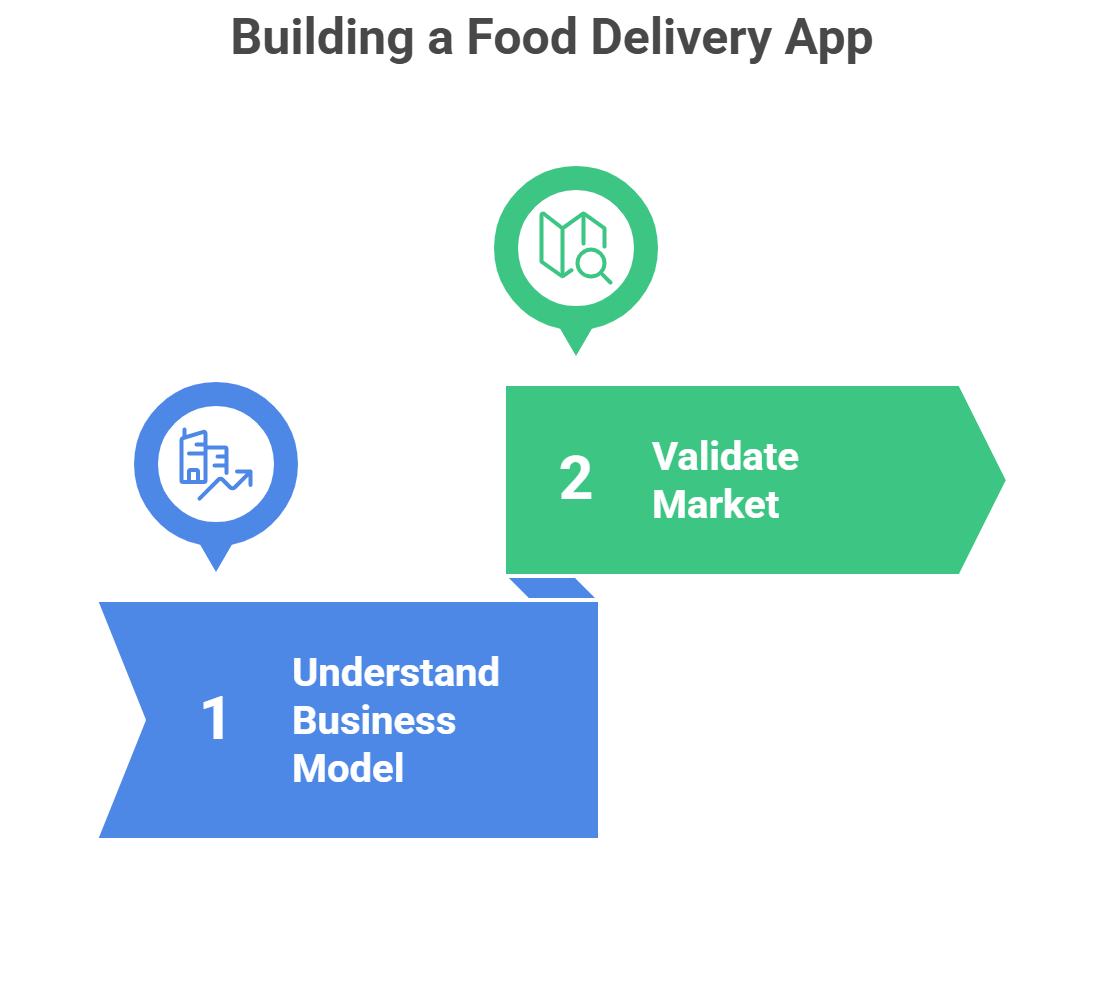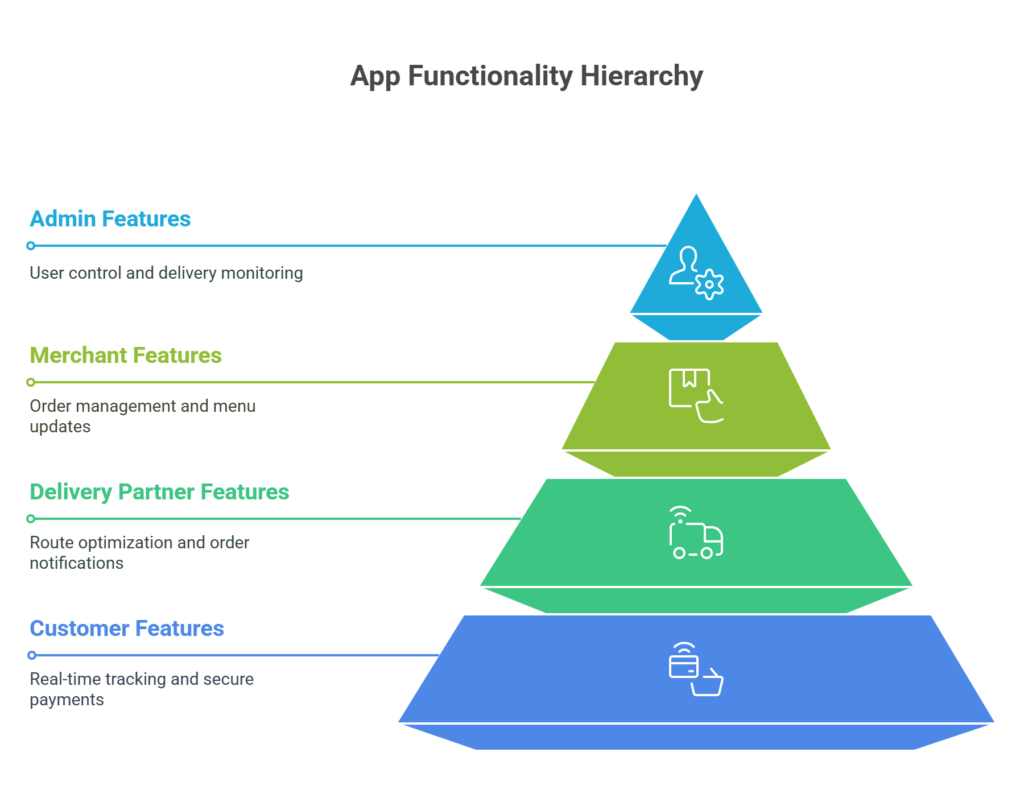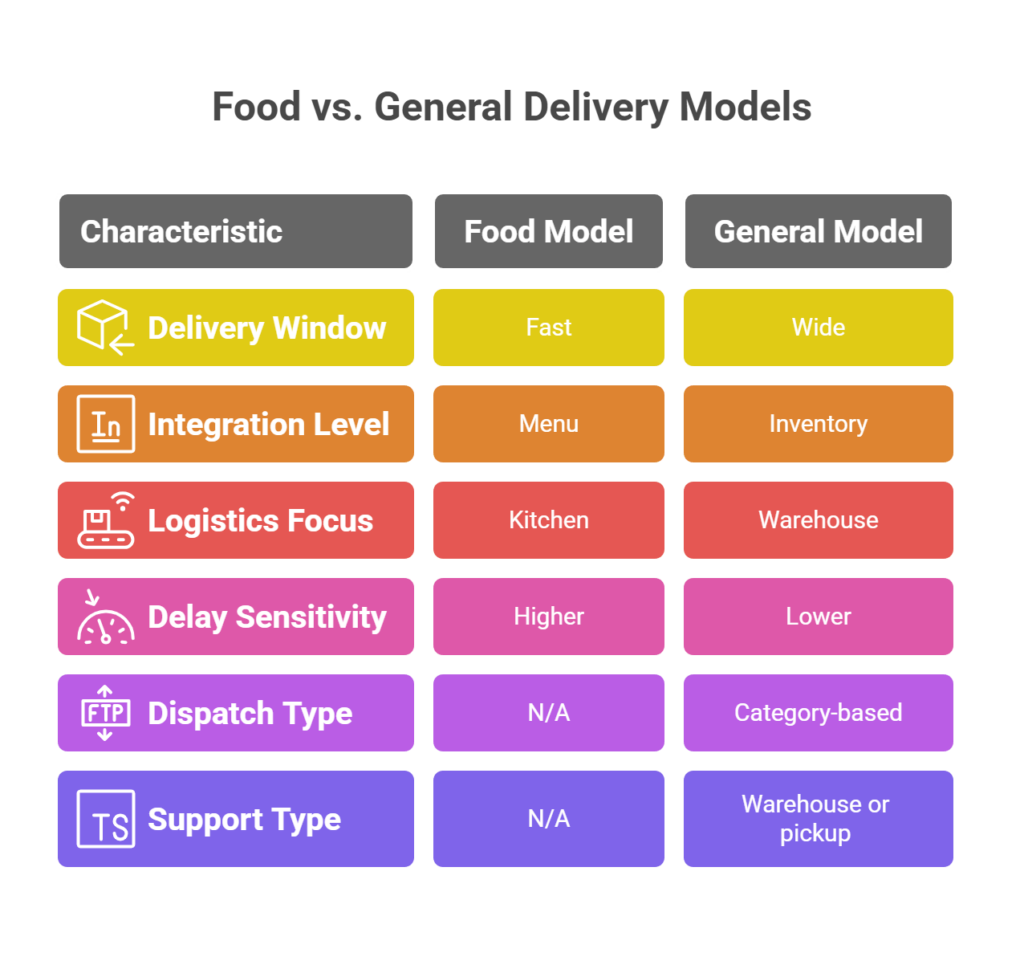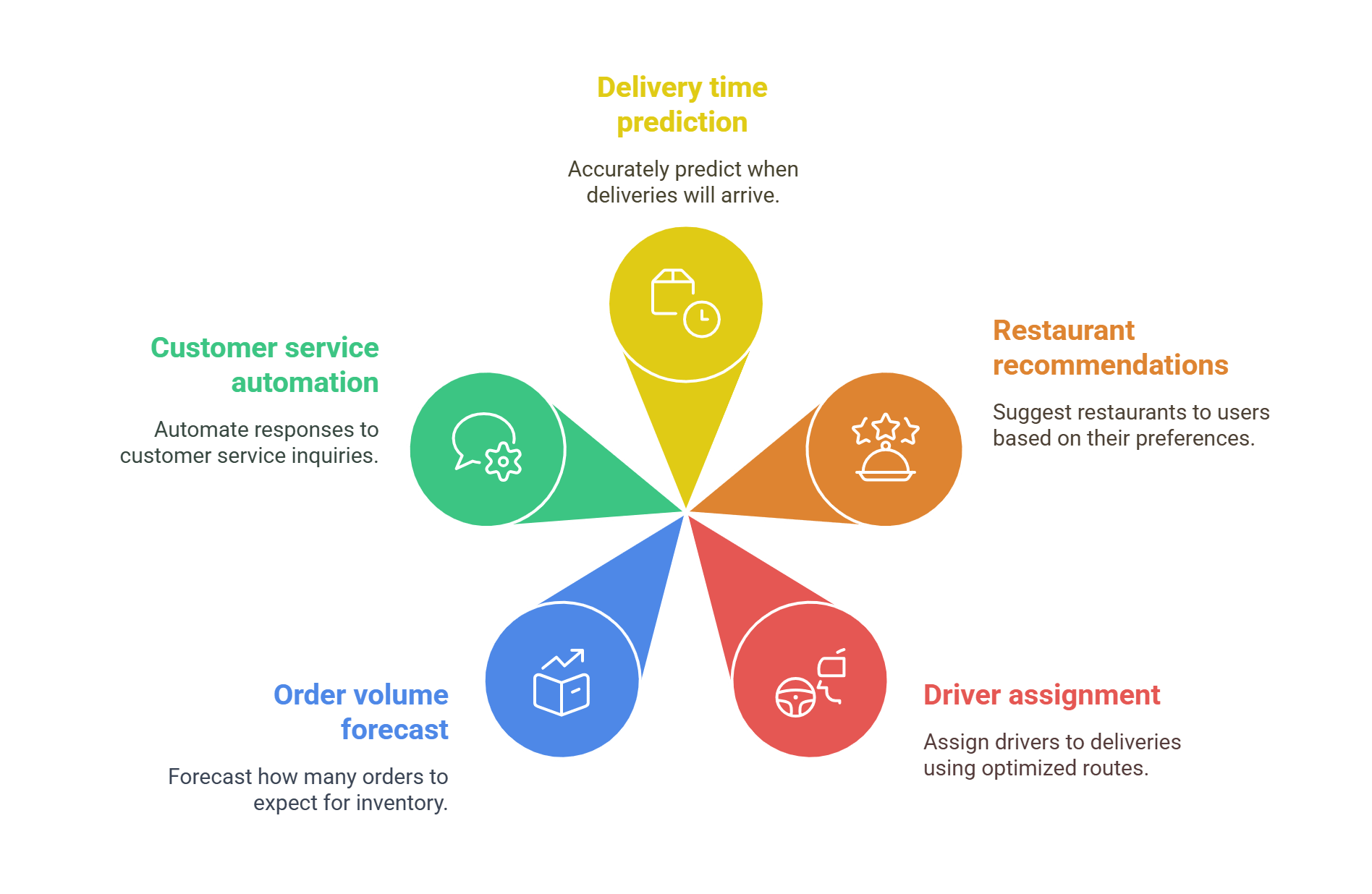This isn’t your average startup idea.
You’re not just building an app. You’re building a full-blown logistics engine that has to handle real-time orders, hundreds of locations, impatient customers, tired delivery partners and still look good doing it.
It’s tempting to say “We’re building the next DoorDash.”
But here’s what we’ll tell you: most fail before their MVP even launches.
At EnactOn, we’ve helped founders and foodtech entrepreneurs build apps like DoorDash. And we’ve seen where they go wrong: overbuilding, underbudgeting, and missing what actually makes a delivery business scalable, and helped them with a strategic approach that actually works.
This guide is the blueprint you need to really understand how to start a business like DoorDash. If nothing, it’ll help you create a tasklist to follow from ideation to execution.
Who Usually Wants to Build a DoorDash-Type Platform?
Most founders we speak to fall into these groups:
- Entrepreneurs who’ve spotted gaps in their city or region
- Restaurant owners tired of high commissions
- Startup founders building hyperlocal or niche marketplaces
- Investors looking to replicate the DoorDash model in new markets
- Logistics aggregators expanding into food or multi-category delivery
No matter your background, the questions are the same. What should I build? How much does it cost? What licenses do I need? How do I make this scalable?
Let’s break it down.
Step-by-Step: How to Make an App Like DoorDash

1. Understand the Business Model
DoorDash, like any robust food delivery app, is a complex system combining marketplace dynamics, logistics operations, and customer engagement.
You’ll need to define whether you want:
- Restaurant-only delivery
- Multi-vendor food and retail delivery
- Subscription-based delivery (like DashPass)
- A white-label service model for vendors
This clarity drives everything from app structure to cost.
2. Validate the Market
Before building anything, research:
- Competitor platforms
- User behavior in your target area
- Pain points in current delivery systems
- Preferred payment methods and cuisines
- Tech adoption rates in smaller towns
If you’re wondering how to start a delivery service in a smaller town, your model must prioritize trust, cash options, and low-overhead growth.
How Much Does It Cost to Develop an App Like DoorDash?
This is the first big question most clients ask. The answer depends on your scope.
- MVP build using ready modules: $10,000 to $30,000
- Full-scale custom platform: $40,000 to $120,000
- Ongoing costs: Server hosting, updates, support, driver onboarding, marketing
If you are unsure of what a DoorDash-like app includes, check out our DoorDash clone app development service that comes with its core module structure explained in detail.
Or, start lean with our MVP development services and build what matters most first.
What Are the Essential Features to Include in a Delivery App?
To match DoorDash-level functionality, your app needs multiple user interfaces. Here’s a breakdown.

For Customers
- Real-time order tracking
- Intuitive search and filter options
- Secure payment integration
- Address book and GPS pin-drop
- Order history and reordering
- Support and issue resolution
For Delivery Partners
- New order notifications
- Route optimization with maps
- Availability toggle and earnings report
- Chat with customer and support
- Proof of delivery options
For Merchants and Restaurants
- Order management panel
- Menu and inventory updates
- Analytics dashboard
- Control over working hours and availability
- Promotions or coupon management
For Admin
- Platform-level user and order control
- Commission and payout systems
- Real-time delivery monitoring
- Zone and delivery area configuration
A DoorDash clone or any other delivery app clone should include these foundational features to avoid needing large rebuilds down the line.
What Tech Stack Is Best for a DoorDash-Like App?
Your choice of tech stack determines performance, scalability, and user experience.
- Frontend: Flutter or React Native
- Backend: Node.js with Express or Python with FastAPI
- Real-time updates: Firebase or Socket.IO
- Database: PostgreSQL or MongoDB
- Admin dashboard: Laravel, Angular, or Vue.js
- Hosting: AWS, DigitalOcean, or GCP
We help startups with end-to-end custom SaaS development to ensure long-term flexibility.
Do You Need a License to Start a DoorDash-Style App?
Yes, and these vary by region. In India or the US, for example, the following are usually required:
- Business registration (LLC, Pvt Ltd, etc.)
- FSSAI license (if you handle food)
- Shops and Establishment license
- GST or sales tax registration
- Local municipality permissions
Even if you’re not cooking the food, operating as a logistics aggregator still requires compliance.
What Are the Key Differences Between Food Delivery and General Delivery?

A food-only model needs:
- Fast delivery windows
- Menu integrations
- Kitchen-level logistics
- Higher sensitivity to delays and freshness
A general delivery model (couriers, medicines, parcels) needs:
- Category-based dispatch
- Warehouse or pickup point support
- Inventory-level integration
- Wider delivery windows and multiple carriers
Pick your category carefully. Want to support both? Modular architecture can help you expand over time.
How Should You Determine the Right Pricing for Your Delivery Services?
Here’s a perspective. Pricing isn’t just a financial decision. No really! It’s not. It’s psychological.
Thus, this is what you should consider when setting your prices:
- Delivery radius vs fuel cost
- Peak hour surcharges
- Subscription-based delivery (like DashPass)
- Free delivery thresholds
- Commission on restaurants vs customer convenience fee
The trick is to align with your audience. College town? Keep it cheap. Premium food options? Offer delivery guarantees.
Use analytics to adjust over time—and make sure your app supports pricing logic from day one.
Use data to optimize your model. If your app doesn’t support flexible pricing rules, that’s a limitation we can help you avoid.
How to Manage Deliveries and Fleet Operations
Delivery is the heartbeat of your app. Without strong fleet logic, the app fails no matter how good the UX is.
Key fleet operations to plan:
- Real-time driver dispatch
- Driver incentives and penalties
- Zone-based delivery assignments
- Tracking performance and order fulfillment
- Managing driver availability and batching orders
We integrate driver panels and admin dashboards into all DoorDash clone builds so you can manage this from day one.
How to Launch and Market a DoorDash-Like Business
This step often gets skipped until launch. Don’t wait.
Here’s what we recommend:
- Partner with food bloggers or local influencers
- Offer first-order discounts and loyalty credits
- Enable referral systems and coupon codes
- Run geo-targeted ads
- Co-market with restaurants in your network
Our restaurant solutions even include management software that helps your vendors offer better service.
Common Mistakes to Avoid When Building a DoorDash-Like Platform
Let’s save you from unnecessary pain:
- Building too much too soon: You don’t need 100 features on Day 1.
- Choosing the wrong tech team: You’ll end up redoing the whole thing.
- No fallback for delivery partner drops: Build buffers.
- Not scaling backend infrastructure: First day crash = last day.
Instead, we recommend:
- Starting with a strong MVP
- Using real-time architecture (Socket.io, Firebase)
- Building scalable APIs from the beginning
- Keeping the UI lightweight and mobile-first
Where AI Makes a Big Difference in Delivery Apps
If you want to reduce ops load and improve customer experience, AI is your best friend.
You can use AI to:
- Predict delivery time more accurately
- Recommend restaurants based on user behavior
- Assign drivers based on route optimization
- Forecast order volume for inventory planning
- Automate customer service responses

It is erroneous to think of AI integration as a bonus. In 2025, AI is a differentiator. Talk to us if you want to build AI-first delivery tools.
How to Scale Your Delivery App Beyond MVP
Your app must be built with growth in mind. Here’s how to prepare:
- Add new delivery zones with minimal code change
- Allow vendors to sign up on their own
- Integrate multilingual and multi-currency features
- Build white-label opportunities for other operators
- Add modules for groceries, medicines, or alcohol later
This is where building with a custom tech partner like EnactOn makes all the difference.
What It Really Takes to Start a Business Like DoorDash
- Know your audience, niche, and model before writing code
- Plan your pricing and delivery logic early
- Build an MVP using proven architecture to reduce cost
- Include all essential user roles and dashboards
- Explore AI for long-term efficiency
- Don’t underestimate fleet operations and partnerships
- Prepare for scale from the start
Let’s Build It Right
You don’t need 12 developers or a million-dollar budget. You need the right partner.
At EnactOn, we specialize in building scalable delivery platforms that perform under pressure and grow with you.
If you’re serious about building something like DoorDash, we’re ready to help.
Explore our DoorDash Clone App →
Get a custom MVP built for your market →
Let’s turn your idea into the next big delivery success story.
